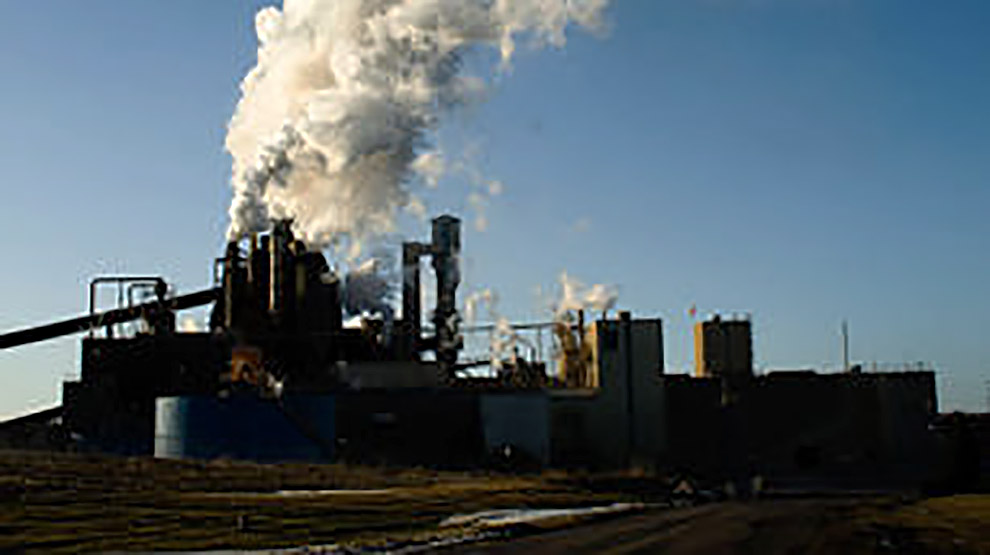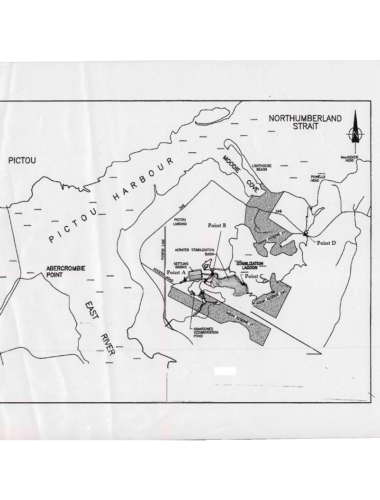Beginning of Northern Pulp shutdown elicits mixed feelings from nearby communities
NS government officials would not confirm if Northern Pulp’s shutdown would breach Boat Harbour Act

caption
Northern Pulp's paper mill in 2009.Northern Pulp’s long anticipated Jan. 31 deadline, imposed by the Boat Harbour Act, came with little fanfare and ushered in a closure process that will last several months.
Environment Minister Gordon Wilson issued a ministerial order on Wednesday that he described as a “road map” to help the mill toward an orderly shutdown.
The order also requires the mill cease production of pulp prior to Friday and outlined how the mill must operate until April. Northern Pulp is also required to file documents with the Department of Environment that shows data ranging from toxicity levels to daily water use throughout their process.
Northern Pulp will continue to use Boat Harbour, the tidal estuary used as their effluent treatment facility, for up to 35,000 cubic metres of wastewater per day until Apr. 30. Boat Harbour will also be used to treat the pulp and paper effluent generated prior to Friday, according to the order. Related stories
During a press conference on Thursday, Wilson was asked seven times by reporters if Northern Pulp’s orderly shutdown would breach the Boat Harbour Act. The questions focused on whether effluent would enter Boat Harbour, which is prohibited by the act after the Jan. 31 deadline.
He neglected to answer the question directly, finally agreeing with a reporter that the shutdown would live up to the spirit of the law, rather than the letter of the law.
“I think the nature of the Boat Harbour Act is being respected here, I think inevitably we are moving to that position, and we’re doing it in a responsible way,” Wilson told reporters.
A note in the order stated that effluent would be discharged at Point D, as shown in the map below. The Signal asked Wilson where Point D released materials, and he said he was not sure. The Signal directed the question to the department’s communications team, asking if effluent from Point D would be discharged into Boat Harbour. On Friday afternoon, they said they were unable to respond with proper information until Monday.

caption
A map of the Boat Harbour Effluent Treatment Plant from the 2015 industrial approval of Northern Pulp’s kraft mill.In a press release issued on Thursday, Northern Pulp referred to the order, saying that only boiler water generated from their shutdown and site run-off from the mill yard and landfill is allowed to be released from the mill.
According to the release, almost all chemicals from the site have been transported to other operating facilities in the country.
Conflicting opinions in the county
Despite the buzz leading up to Northern Pulp’s deadline, nearby Pictou didn’t resonate with the expected intensity.
Pictou Mayor Jim Ryan said the mill’s final day was quiet. He said the extension that the facility was given to dump wastewater into Boat Harbour until Apr. 30 softened the deadline’s importance.
“Although the 31st was a day that everyone was waiting for, it’s a little bit, I’m going to say anticlimactic,” Ryan said in a phone interview on Friday.
“The mill stopped producing its product a couple weeks ago and apparently they’re going to continue pumping effluent into Boat Harbour for a few more months while they finish the controlled shutdown,” Ryan added, referring to the effluent as different from the pulp effluent that has typically entered the treatment facility.
People in the town are experiencing a range of emotions as a result of the closure process beginning, Ryan said. Some are worried about their businesses and livelihood, others are concerned for the environmental impacts of the mill and its potential to resume operations. But, community members remained empathetic for differing opinions on the orderly shutdown.
“People are very concerned about those families and those individuals who are going to be greatly affected from an economic perspective by losing their jobs or a large portion of their business because of this shutdown,” Ryan said.
For Pictou Landing First Nation, Friday held much more significance. In a Facebook post, the chief and council said that “today begins the beginning of a new chapter for all of us. The story of reclaiming A’se’k begins today.”
According to a master’s thesis written by Ella Bennett, A’se’k roughly translates to “the other side,” “over there,” or “the other room.”
“This has been a long hard fight for our community, to those who have passed on, we thank you for all your hard work, guidance and leadership. To all those still standing with us, thank you for helping to guide us as your Leadership,” the Facebook post reads. “We have stood together for the past 53 years, and together, we will work as we begin the clean up.”
In a note to community members released earlier this month, Pictou Landing First Nation said they accepted the province’s decision to allow Northern Pulp to continue to use Boat Harbour until April 30, but called the extension “disappointing.”
About the author
Dayne Patterson
Dayne Patterson is a recent graduate student at the University of King's College. He's reported from all over Canada, including B.C., Alberta,...
